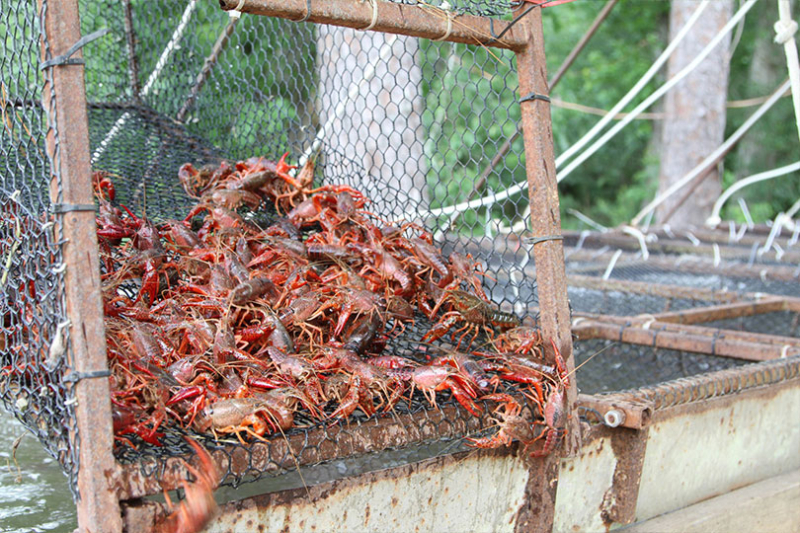The U.S. Department of Agriculture (USDA) Farm Service Agency (FSA) authorized policy flexibilities for the Emergency Assistance for Livestock, Honeybee and Farm-Raised Fish Program (ELAP) to help commercial crawfish farmers in 14 Texas counties recover from the impacts of extreme heat conditions in 2023. That heat subsequently devastated 2024 crawfish production in many crawfish producing counties in Texas.
FSA is now accepting ELAP applications from eligible commercial crawfish farmers.
Commercial crawfish farmers in Austin, Brazoria, Chambers, Fort Bend, Galveston, Harden, Harris, Jeferson, Liberty, Matagorda, Newton, Orange, Waller and Wharton counties may now be eligible ELAP assistance for 2024 losses due to qualifying extreme heat conditions.
ELAP provides emergency assistance to eligible producers of livestock, honeybee and farm-raised fish who suffer losses because of qualifying disease, adverse weather or other conditions. The assistance provided under ELAP for farm-raised fish losses include physical loss and feed loss.
“Production agriculture in Texas is as diverse as it’s culture, landscape and the people who call Texas home, and we recognize that our federal farm program policies may not always fit the unique needs of all producers. Such is the case with crawfish production,” said Kelly Adkins, FSA state executive director in Texas. “True to our commitment to expanding program reach to all producers in need of assistance, we’ve gone back to the drawing board and updated program policy to provide commercial crawfish producers access to much-needed disaster recovery assistance.”
Eligible cause of loss
Extreme heat is considered an ELAP-eligible loss condition.
In response to known extreme heat conditions in Texas in 2023 and the reported impact on commercial crawfish production, the FSA State Committee in Texas recently developed state policy for extreme heat as an eligible cause of loss for crawfish.
This policy decision makes commercial crawfish farmers in Texas, who meet program criteria, eligible for ELAP assistance for 2024 losses due to qualifying conditions in 2023.
Inventory and production records flexibilities
ELAP policy requires farmers to provide a beginning and ending inventory record. But, due to the unique crawfish production systems, this is an almost impossible ask of producers. To meet the needs of crawfish farmers, FSA is implementing ELAP inventory and production records flexibilities that offer options for producers who have records and for those who don’t, allowing all commercial crawfish farmers an opportunity to apply for ELAP assistance.
Under current ELAP policy, for program payments to be calculated for farm-raised fish losses, commercial crawfish farmers must provide FSA with historical production data for 2021 to 2023. For producers who cannot provide the required production records, FSA will assign production values based on county expected yields (CEY) from an Olympic average of the previous five years in that county. Crawfish production is maintained in pounds/surface acre by each producer.
Exact crawfish production data, by state or county for Texas, is not readily available in comparison to the detailed information gathered by Louisiana State University and recently used to support delivery of FSA ELAP assistance to Louisiana’s commercial crawfish producers for extreme heat losses. To determine a CEY for crawfish production for eligible Texas counties, FSA will use the Louisiana five-year average yield for parishes that are located adjacent to counties in Texas.
Calculating payments
Depending on the availability of producer records, ELAP payments will be calculated by taking the established beginning inventory three-year average production history (or the county expected yield) per surface acre of water, certified on the FSA-578 Report of Acreage form, minus the current year’s production records.
More information
For additional ELAP information or to apply for program assistance, producers can contact the FSA office located in their local USDA Service Center.


Leave A Comment